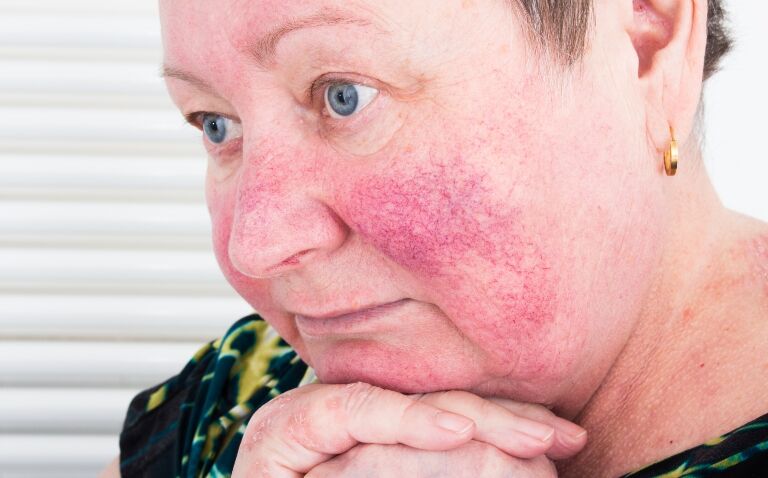Paroxetine is effective for erythematous rosacea which failed to respond to at least three months of tetracycline treatment or intense pulsed light therapy, according to a recent, randomised placebo-controlled trial.
In a previous study, the antidepressant paroxetine was shown to be effective for menopausal hot flushes, which suggests an anti-inflammatory effect. Here, Chinese researchers sought to evaluate the efficacy and safety of a 12-week course of paroxetine for moderate-to-severe erythema of rosacea.
The primary outcome was the proportion of participants achieving a Clinical Erythema Assessment (CEA) success, which was defined a CEA score of 0 (clear) or 1 (almost clear) or at least a two-grade or higher improvement in CEA score from baseline after 12-weeks treatment.
As rosacea is associated with facial flushing, the team also used a Flushing Assessment Tool, with success defined by a >2-point improvement and a self-reported overall flushing score (ranging from 0-10).
Additional secondary outcomes examined the level of skin burning, depression and the impact on a rosacea quality of life tool.
Paroxetine and clinical erythema
A total of 97 patients were enrolled and 49 were randomised to paroxetine 25 mg and the remainder to a placebo for a total of 12 weeks.
After 12 weeks, significantly more patients given paroxetine achieved the primary outcome (42.9% vs 20.8%, p = 0.02). In addition, there was a significant improvement in flushing success (p = 0.04) and an improvement in overall flushing score (2.49 vs 1.68, p = 0.047).
Participants taking paroxetine also reported significant reductions in skin burning (p = 0.003) and depression (p = 0.041) compared to placebo. However, there was no significant differences in the extent to which telangiectasia improved between the two groups (p = 0.93) or in rosacea Quality of Life scores (p = 0.83).
During the study, treatment-emergent adverse events (TEAEs) occurred in 24.1% of paroxetine patients and in 11.1% of the placebo group. For the paroxetine group, these TEAEs included dizziness (10.3%), lethargy (10.3%), nausea (8.6%), dyspepsia (6.9%) and muscle tremors (5.2%).
Following cessation of therapy, the team also considered disease recurrence. Although only 21 patients were included in the 12-week follow-up, among the 16 who participated in a face-to-face interview, five (31.2%) reported disease recurrence and two relapsed to their initial CEA severity.
The researchers concluded that paroxetine is an effective and well-tolerated alternative treatment for moderate-to-severe erythema of rosacea.










